There is probably no other single question that was asked by Edgar Rice Burroughs so many times during his life. One can rest assured that ERB's creative mind was the direct source of Tarzan, but being human he had to be influenced by previous writers.
Once, when reviewers accused ERB of stealing his themes from Kipling, Wells, and Haggard he replied in a letter to The Bristol Times, Bristol, England, dated February 13, 1931. "To Mr. Kipling as to Mr. Haggard, I owe a debt of gratitude for having stimulated my youthful imagination, and this I gladly acknowledge, but Mr. Wells I have never read and consequently his stories of Mars could not have influenced me in any way.
The Mowgli theme is several years older than Mr. Kipling. It is older than books. Doubtless, it is older than the first attempts of man to evolve a written language. It is found in the myths and legends of many peoples, the most notable, possibly, being the legend of Romulus and Remus, which stimulated my imagination long before Mowgli's creation." ERB again acknowledged that Kipling may have influenced him, adding, "but I am also indebt to many other masters as, doubtless, Mr. Kipling would acknowledge his debt to the vast literature that preceded him."
In an interview on Radio Station KIM, Los Angeles in the same year ERB stated, "As a child, I was always fascinated by the legend of Romulus and Remus, who were supposed to have been suckled and raised by a she-wolf. This interest, I presume, led to conjecture as to just what sort of an individual would develop if the child of a highly civilized, intelligent, and cultured couple were to be raised by a wild beast without any intercourse whatsoever with members of the human race. It was because I had played with this idea on my mind at various times, I presume, that I naturally embodied it in the story after I started writing."
In both the letter and radio interview ERB suggests that his imagination had stimulated his creations long before he ever sat down to write. There is a very good chance the Tarzan idea formed in his mind as early as 1898. On the flyleaf of Decent Of Man, by Charles Darwin, a book discovered in ERB's library, there was a pencil drawing of a large monkey or ape. To the right of the drawing, the twenty-three-year-old future novelist had written "Grandpa" and signed it "E.R. Burroughs - Jan 99". The drawing and his early exposure to Darwin's theories provide insight into the questions about when the Tarzan saga was born.
In December 1907, there were recorded letters from ERB to a book dealer and general librarian in Chicago requesting information about fingerprinting. One response from McClurg and Company lists the following, Holt Fingerprinting Of Children, Fingerprint Classification And Uses, by Henery; Fingerprint Directories by Galton.
Decipherment Of Blurred Fingerprint
All Tarzan fans know that in chapter four of Tarzan Of The Apes, the six-month-old baby's fingerprints established proof that he was the son of Lord Greystoke. Some researchers feel baby John Clayton II accidentally put his inky fingers on his father's diary. Later in chapter twenty-eight those books on child care were to prepare ERB for his first child which was soon due. Others because of the fingerprinting books, feel it served a dual purpose and was also a research book for Tarzan Of The Apes.
Although ERB had answered the question many times it always seemed to resurface. In the October 1935, issue of Contact Magazine, he was asked once more, "How did you happen to write Tarzan?" His reply was, "I've been asked that hundreds of times and ought to have a good answer thought up by now, but haven't. I suppose it was just because my daily life was full of business, and system, and I wanted to get as far from that as possible.
My mind, in relaxation, preferred to roam in scenes and situations I'd never known. I find I can write better about places I've never seen than those I have seen." On March 29, 1937, ERB received a letter from Professor Rudolph Altrocchi of the University of California who was interested in folkloristic and narrative motifs. ERB's March 31 reply is fascinating for he offers a new source that has been previously unmentioned. "As close as I can come to it, I believe that it may have originated in my interest in Mythology and the story of Romulus and Remus. I also recall having read many years ago the story of the sailor who was shipwrecked on the coast of Africa and who was adopted by and consorted with great apes to such an extent that when he was rescued a she-ape followed him into the surf and threw her baby after him.
Then, of course, I read Kipling, so it probably was a combination of all of these that suggested the Tarzan idea to me. The fundamental idea is, of course, much older than Mowgli, or even the story of the sailor; and probably antedates even Romulus and Remus; so that after all there is nothing either new or remarkable about it."
In the March 1938 issue of Markets And Methods, ERB is interviewed and states, "As a boy I loved the story of Romulus and Remus, who founded Rome, and I loved too, the boy Mowgli in Kipling's jungle books. I suppose Tarzan was the result of those early loves. Perhaps the fact that I lived in Chicago and yet hated cities and crowds of people made me write my first Tarzan story. Tarzan was, in a sense, my escape from unpleasant reality. Perhaps that is the reason for his success with modern readers. Maybe he takes them. too, away from humdrum reality."
Although Professor Altrocchi searched diligently for the story about the shipwrecked sailor for two years, he had no success. In June 1939 he recontacted ERB and on June 21 the author wrote back. "I am afraid that I have misled you if I have suggested that I ever made any research for the fauna and flora of Africa and the customs of native tribes. I had already found Tarzan in my imagination."
In a letter to Donald Herne dated August 12, 1939, ERB wrote, "I presume that I got the idea for Tarzan from the fable of Romulus and Remus who were suckled by a she-wolf, and who later founded Rome; and also from the works of Rudyard Kipling, which I greatly enjoyed as a young man." ERB wrote in the August 1949 issue of Writers Digest, "I started my thoughts on the legend of Romulus and Remus who had been suckled by a she-wolf and founded Rome, but in the jungle I had my little Lord Greystoke suckled by an ape." Up to this point, all the mentioned sources are provided by ERB in his very own words, but we can go a step further.
Another influence in shaping the direction of the Tarzan saga was Thomas Newell Metcalf one-time editor of All-Story Magazine. Mind that ERB wrote basically for money and not for pleasure. Due to this, he was often following the advice of the editors he wrote for. Make no mistake, they only offered a broad direction and it was ERB's creative mind that wove the tales. Another influence on ERB would have been his favorite authors. While young he loved to read about the Romans and enjoyed the works of Gibbon and Thomas Babington Macauley. ERB's favorite fiction writers were Jack London, George Barr McCutcheon, Anthony Hope, Zane Grey, and Richard Halliburton.
One of the famous author's most controversial sources was his dreams. While working for his brothers in Idaho ERB was a bystander in a saloon when a fight broke out. One way or another he managed to get in the way of a policeman's billy club and received a severe blow which hospitalized him. He complained of dizziness for a long time afterward and reported having strange hallucinations. In later years he even wrote to the Boston Society for Psychic Research the following:
"In 1899 I received a heavy blow on the head which, while it opened up the scalp, did not fracture the skull, nor did it render me unconscious, but for six weeks or two months thereafter I was the victim of hallucinations, always after I had retired at night when I would see figures standing beside my bed, usually shrouded. I invariably sat up and reached for them, but my hands went through them. I knew they were hallucinations caused by my injury and did not connect them in any way with the supernatural, which I do not believe."
ERB never fully recovered from this blow for throughout his adult years the author was subject to nightmares. These occurred regularly and were of the type familiar to many dreamers. These involved the kind of situation where some fearful creature or unidentified peril approached and aware of the approaching danger the dreamer desperately tried to escape, but found himself paralyzed or his movement seemed to be in slow motion.
While ERB was a columnist in Hawaii, in 1942, he became friends with Brigadier General Tom Green, then executive assistant to the commanding general. Green occupied a post under martial law equivalent to that of the Governor of Hawaii. After leaving Hawaii in 1943, Green regularly kept in contact with the Tarzan author. From tape-recorded recollections, the general claimed to recall being told by the author that his nightmares often supplied ideas for stories.
Another man who was at the Niumalu Hotel at the same time as Green and ERB was Sterling Adams, head of the FBI in Honolulu. In a letter that he wrote February 4, 1969, Adams stated, "Those who resided close to Ed's shack recall numerous occasions when Ed would have wild nightmares and emit sounds not unlike his 'Tarzan of the Apes'. Afterward, Ed would tell us that he dreamed up some of the characters and plots for his stories and would arise in the night and jot down notes while the thoughts were fresh in his mind. We always wondered if he was being factual. However, he was writing about one novel each year at the time, and having read one of his works of that period which he autographed, I can believe that the characters were born out of one of his nightmares."
The most neglected source for Tarzan, as are all his characters, is ERB's own life. The most successful writer is the author who writes concerning a subject that he is very knowledgeable about. It is no secret that it was a regular habit for ERB to mix his true life experiences with his fictional yarns. Let me bring to light just a few examples.
(1) As mentioned above, when ERB was struck in the head he often saw hallucinations of shrouded figures after he retired at night. Does that remind anyone of the opening of Pirates Of Venus which he wrote in 1931?
(2) In A Princess Of Mars, ERB gave the narrator his name for a pseudonym although it is quite clear the two are not the same person. ERB the author was born in Chicago, Illinois in 1875. ERB the narrator is the great-nephew of John Carter and was born in 1855, in Virginia.
(3) In The Bandit Of Hell's Bend the Bar 'y' Ranch is named after ERB's brother's Bar 'y' Ranch in Idaho. A number of the fictional characters in this novel were based on real people that ERB met at his brother's ranch.
(4) In Tarzan At The Earth's Core the airship 0-220 was named after ERB's one-time phone number.
This amazing list could go on and on, but that is another article in itself. I would like to close with these four examples with this comment: It may be true that Romulus and Remus, and Kipling's jungle books, were an inspiration that started ERB's mind churning. However, I can not help but believe Tarzan's primary source was no one but the author himself. I would like to give credit to Irwin Porges and his book Edgar Rice Burroughs, The Man Who Created Tarzan. Without him and his book, this collection of information would have been impossible. Mr. Porges' work is very informative about the life of Edgar Rice Burroughs. It is a must for any serious ERB fan.
ABOUT THE AUTHOR
James Michael Moody is a lifelong fan and collector of Edger Rice Burroughs. Moody has contributed over two hundred articles to various ERB-related fanzines over forty-five years. He also manages an unauthorized Tarzan blog titled, Greystoke Chronologist: James Michael Moody. There the researcher chronologies the Tarzan books starting in May 1872 (known as the pushback theory) instead of the more accepted date, May 1888.
James Michael Moody is also the author of the action-packed Sci-Fi fantasy adventure Unium series. Pioneers On Unium, published December 31, 2019, Exiled On Unium, published August 25, 2022, and Swordsman On Unium published on July 15, 2024.

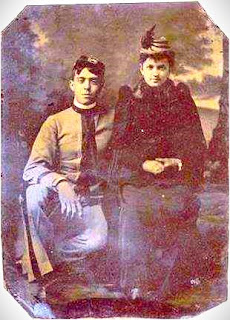






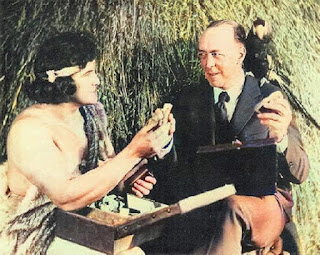
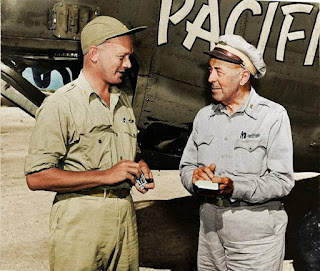
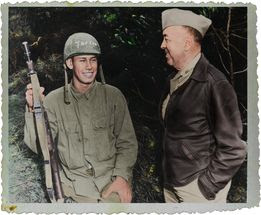
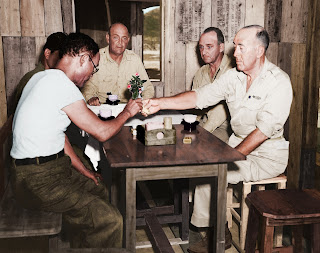
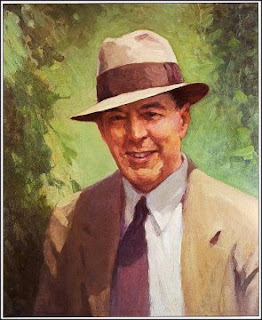
.jpg)






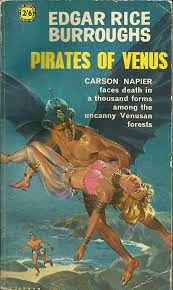
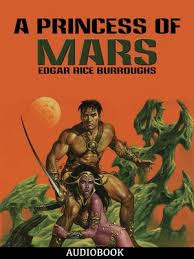
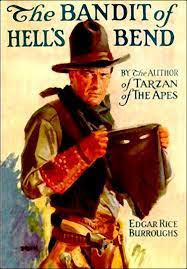


No comments:
Post a Comment